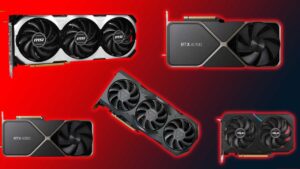Introduction:
In the world of semiconductor design, open source hardware (OSH) initiatives are driving a seismic shift, democratizing access to chip design tools, methodologies, and even entire chip architectures.
Beyond the confines of proprietary systems, these initiatives are fostering collaboration, innovation, and accessibility.
In this article, we delve into some prominent OSH initiatives and explore how they are reshaping the landscape of chip design.
Follow us on Linkedin for everything around Semiconductors & AI
1. RISC-V International:
At the forefront of the OSH movement stands RISC-V International, a non-profit organization. dedicated to advancing the RISC-V Instruction Set Architecture (ISA).
With a mission to foster global adoption, RISC-V International provides a wealth of resources. It includes tutorials, reference manuals, and a directory of compliant tools and software.
2. OpenHW Group:
Complementing RISC-V International is the OpenHW Group, a non-profit organization. It is focused on creating a collaborative environment for hardware development.
Moreover, Offering tools like the Core Verification Suite, the OpenHW Group facilitates the verification of open-source hardware cores, promoting best practices and methodologies for OSH projects.
By fostering standardization and collaboration, the OpenHW Group accelerates the adoption of open-source hardware across industries.
3. LibreCores:
For designers seeking a platform to share and collaborate on hardware projects, LibreCores provides a vibrant online community portal.
Aggregating projects across various domains, including integrated circuits (ICs), LibreCores offers a vast library of pre-designed hardware IP cores. Through forums and discussion boards, LibreCores cultivates a strong sense of community. It is enabling developers to connect, collaborate, and exchange knowledge seamlessly.
4. CHIPS Alliance:
Targeting high-performance computing (HPC) applications, the CHIPS Alliance brings together universities, research institutions, and companies to collaborate on chip design.
With projects like Rocket Chip, a complex open-source System-on-Chip (SoC) design, the CHIPS Alliance pioneers cutting-edge architectures for next-generation processors.
By promoting open collaboration and innovation, the CHIPS Alliance drives advancements in high-performance computing through open-source hardware.
Beyond Cores: Open-Source Initiatives for the Entire Design Flow
While cores are essential building blocks, the OSH movement extends beyond pre-designed hardware.
In areas such as Electronic Design Automation (EDA) tools, Hardware Description Languages (HDLs), verification methodologies, and foundry access, open-source initiatives are revolutionizing the entire chip design flow.
5. Electronic Design Automation (EDA) Tools:
Traditionally, EDA tools have been expensive and proprietary.
However alternatives like KLayout and Magic VLSI are emerging, providing designers with powerful tools for chip layout and design.
Additionally, tools like Icarus Verilog offer open-source simulation capabilities, enabling designers to verify the functionality of their hardware descriptions effectively.
6. Open-Source Hardware Description Languages (HDLs):
Verilog and SystemVerilog have long dominated the landscape of HDLs. However, open-source alternatives like Chisel offer a more concise and Pythonic syntax, targeting both FPGAs and ASICs. By providing flexible and intuitive language constructs, Chisel simplifies the process of hardware design and enables rapid iteration and prototyping.
7. Verification and Testing Methodologies:
Ensuring the functionality and correctness of chip designs is paramount. Open-source initiatives like the Universal Verification Methodology (UVM) provide a framework for creating robust and reusable verification environments.
By promoting standardization and best practices in verification, UVM accelerates the development cycle and enhances the reliability of hardware designs.
8. Foundry Access and Fabrication:
Historically, chip fabrication has been limited to a few large foundries, posing a barrier to entry for smaller players and academic projects.
However, open-source initiatives like Skywater Technologies Open PDK and ShuttleRuns are changing the game.
By providing access to Process Design Kits (PDKs) and offering collaborative fabrication programs, these initiatives empower designers to fabricate custom chips at lower costs, driving innovation and accessibility in semiconductor manufacturing.
Read More:Meta Introduces ‘Imagine’: A Revolutionary Image Generation Feature – techovedas
If you are a college looking to build an IC using open Source, drop us a mail at Techovedas@gmail.com
Conclusion:
In conclusion, open-source hardware initiatives are revolutionizing the field of chip design, democratizing access to tools, methodologies, and architectures. From standardized ISAs and collaborative development environments to open-source EDA tools and fabrication programs, the OSH movement is reshaping the way we approach semiconductor design. By fostering collaboration, innovation, and accessibility, open-source hardware initiatives are driving the next wave of advancements in chip design and enabling a new generation of designers to make their mark on the industry.



